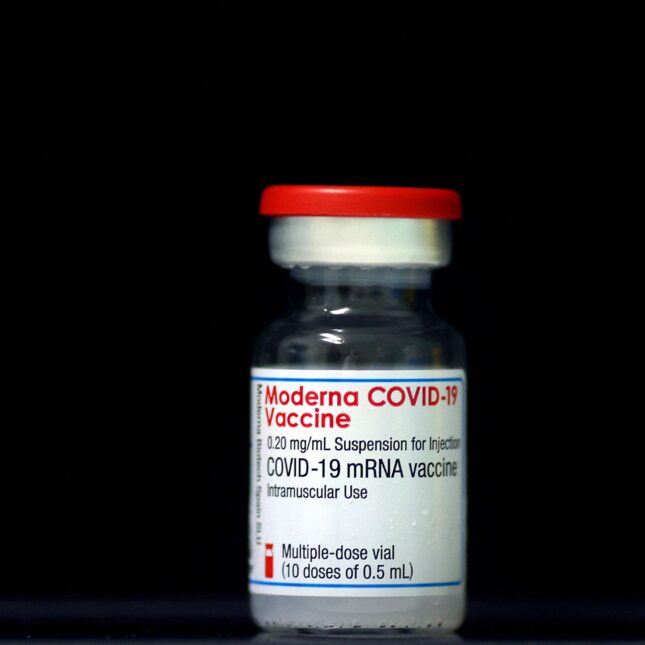
Want to stay on top of the science and politics driving biotech today? Sign up to get our biotech newsletter in your inbox.
Hello, all. Damian here with a rare look at a biotech in collapse, Moderna’s ambitious future in vaccines, and what looks like a massive missed opportunity.
The need-to-know this morning
• Uniqure announced it would lay off about 20% of its workforce as part of a reorganization plan.
• The Japanese firm Kyowa Kirin is acquiring gene therapy maker Orchard Therapeutics in a $400 million deal.
What it’s like when your biotech goes belly up
Histogen, like many biotech companies that went public in 2020, has seen its best-laid plans gradually come apart. But unlike most of its peers, the company has chosen to return its remaining cash to shareholders instead of pressing on. And, even more uncommon, Histogen is speaking frankly about what it’s like to fail in biotech.
In an interview with STAT’s Jonathan Wosen, the company’s outgoing leadership detailed the series of setbacks that took Histogen from a promising drug developer to a penny stock on the verge of liquidation. There were clinical setbacks, unsuccessful partnerships, failed reverse mergers and, finally, the decision to just pack it in.
“The energy was certainly one of, ‘Look, we have a tough job to do. We don’t really have a lot of great options. What’s really in the interest of shareholders?’” said David Crean, a member of Histogen’s board.
Did Pfizer miss a multibillion-dollar opportunity?
Yesterday, Sanofi agreed to pay up to $1.5 billion for a 50% share of an in-development autoimmune treatment. Earlier this year, Merck paid about $11 billion for a company developing a similar medicine. Each deal serves as a reminder that Pfizer, which had a competing drug in its own pipeline, chose to all but give it away in 2022.
The common thread is TL1A, a bodily protein linked to inflammation and tissue scarring. Targeting TL1A seems to hold promise for treating a host of inflammatory disorders, including ulcerative colitis and Crohn’s disease, which is why Sanofi and Merck spent all that money.
Pfizer, by contrast, granted the U.S. rights to its TL1A treatment to Roivant Sciences for nothing up front, instead taking a 25% stake in the Roivant subsidiary that will develop it. About a month later, the Roivant drug outperformed expectations in a Phase 2 trial, with results comparable to Prometheus’ treatment.
Moderna’s omnibus vaccine is on track
The grand plan for Moderna’s future in respiratory viruses is to market a single shot that would protect against Covid-19, influenza, and RSV, using the scalability of mRNA to craft a first-of-its-kind product. And the first step — establishing the promise of its combination flu and Covid vaccine — is moving on as planned.
Yesterday Moderna said its combo shot measured up to established flu and Covid vaccines in generating immune responses against each virus. The next step is to take that combination to Phase 3, which could lead to approval by 2025. At the same time, Moderna is awaiting FDA approval for its RSV vaccine and testing a combination that would protect against all three viruses.
Moderna has projected 2027 respiratory vaccine revenue of between $8 billion and $15 billion, a bullish forecast that will require the company to succeed with its omnibus vaccine. Among the potential challenges are waning demand for Covid boosters and a side effect profile that might lead consumers to opt for other products.
Sandoz makes a shaky debut after spinoff
After more than a year of corporate plotting, market speculation, and shareholder debate, Novartis’ generics division began its life as a standalone company. And the immediate reaction was less than enthusiastic.
Sandoz began trading on the Swiss exchange yesterday, opening at a valuation of about $11 billion. That was below analysts’ projections, which ranged from about $12 billion to $25 billion. The problem, one analyst told Bloomberg, is that the market is wary of the volatile world of generics, and Sandoz, which has a deeper pipeline of biosimilars than many of its rivals, will need time to win investors over.
More reads
• Was Amgen less than forthcoming about FDA’s concerns on its cancer drug? STAT
• Key Senate panel eyes action on drug shortages, STAT
• Why rings of RNA could be the next blockbuster drug, Nature
• Eli Lilly executive who oversaw development of blockbuster diabetes drug is set to retire, Bloomberg











Exciting news! STAT has moved its comment section to our subscriber-only app, STAT+ Connect. Subscribe to STAT+ today to join the conversation or join us on Twitter, Facebook, LinkedIn, and Threads. Let's stay connected!
To submit a correction request, please visit our Contact Us page.